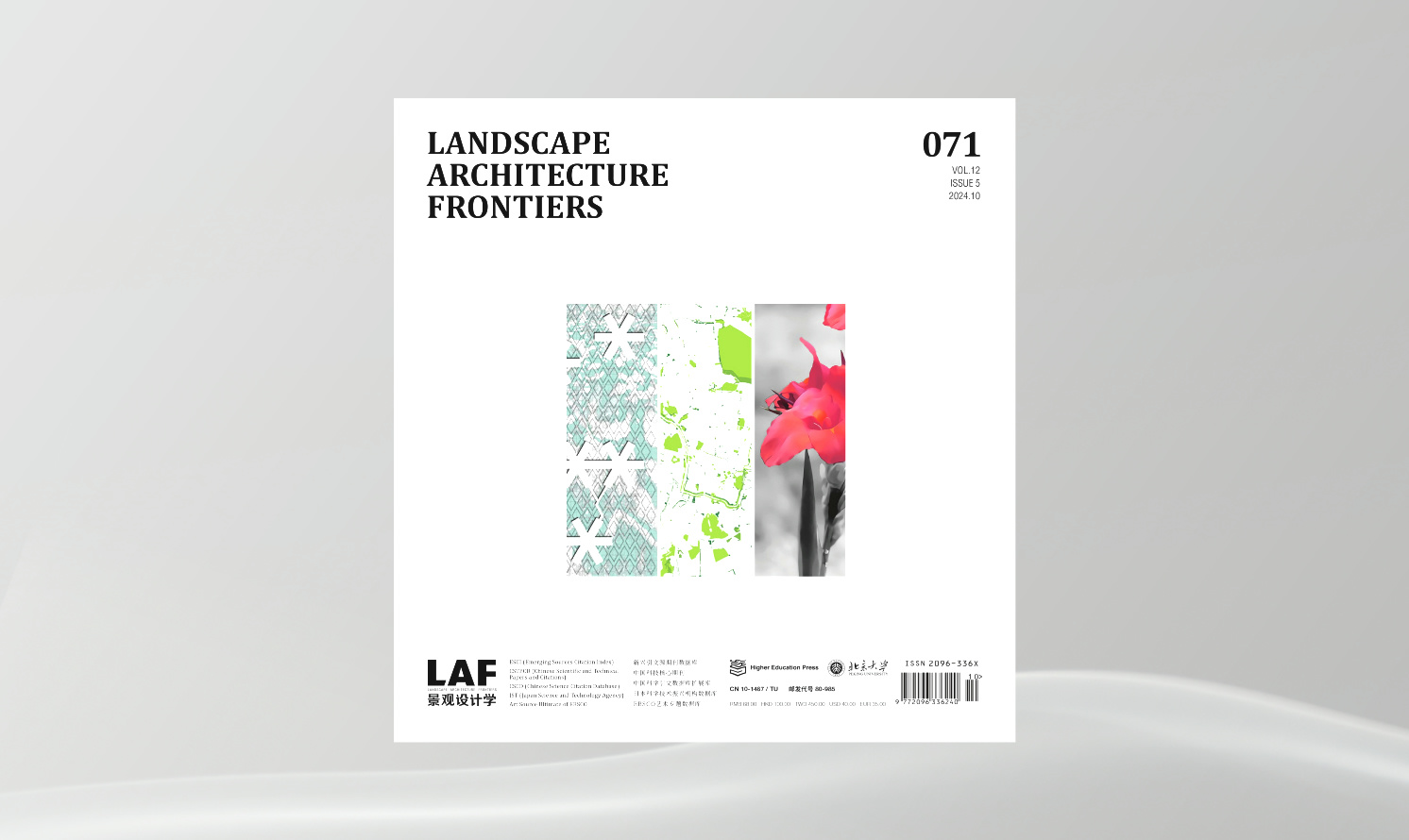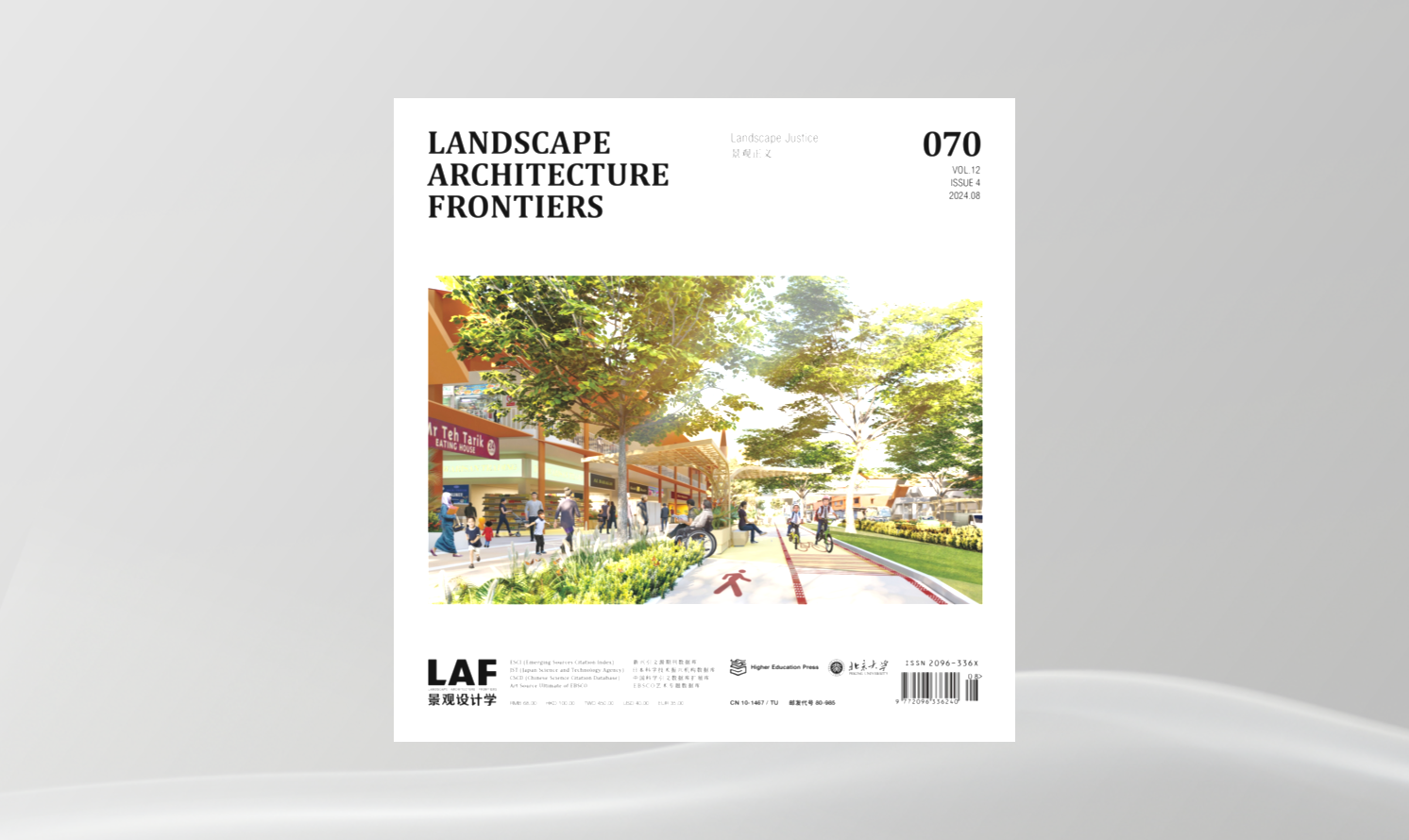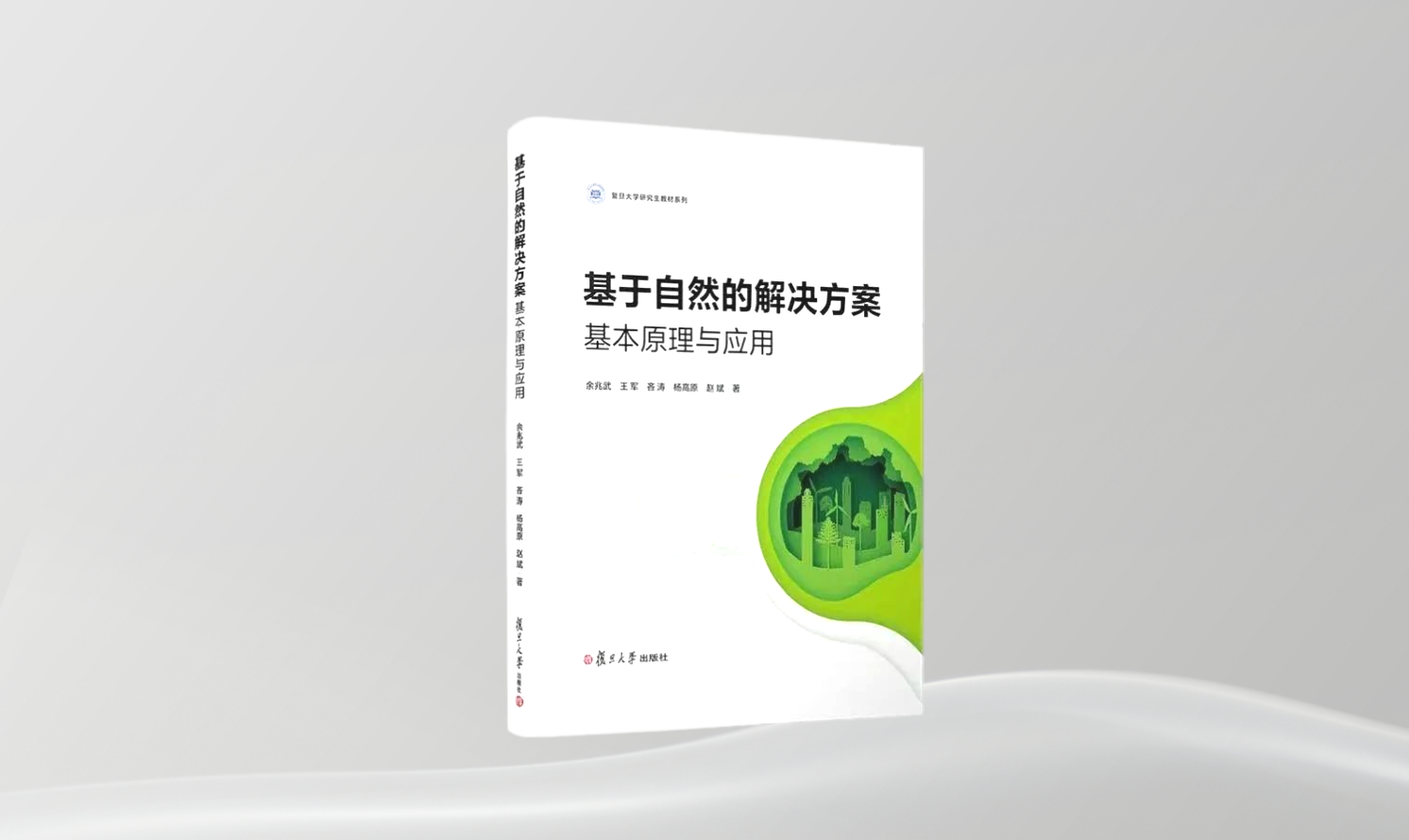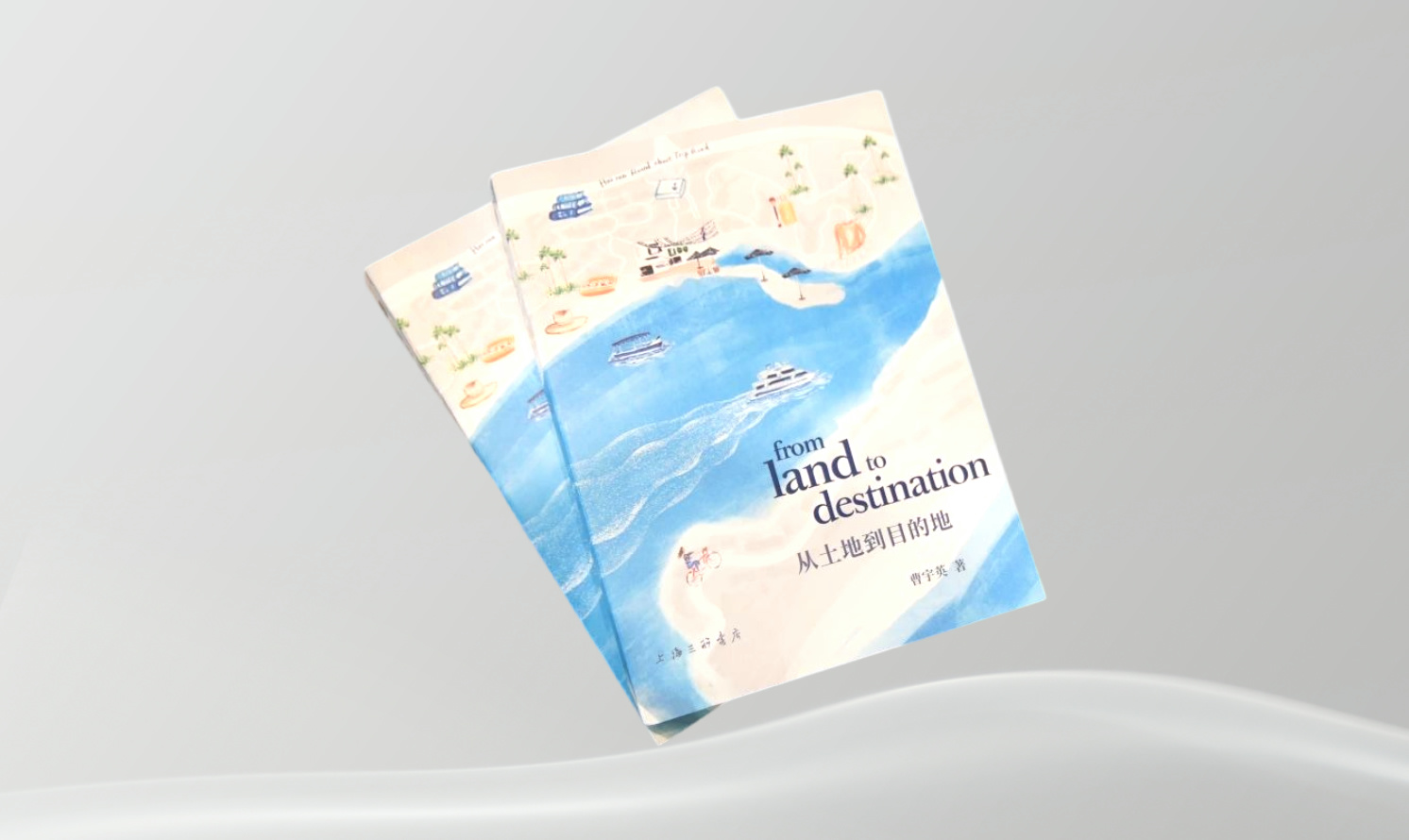生態(tài)植物群落在城市基礎(chǔ)設(shè)施中的作用和意義——中國(guó)苗圃與種子產(chǎn)業(yè)的新機(jī)遇
The Role of Ecologically Based Vegetation in Urban Infrastructure — A New Opportunity for the Nursery and Seed Industry in China
作者:詹姆斯?希契莫夫、杭燁 Author: James HITCHMOUGH, Ye HANG
摘要 ……
本文對(duì)在城市發(fā)展中逐步增強(qiáng)綠色基礎(chǔ)設(shè)施建設(shè)的政策導(dǎo)向和不斷發(fā)展的種植設(shè)計(jì)方法之間的關(guān)系進(jìn)行了探究���,強(qiáng)調(diào)種植設(shè)計(jì)的新趨勢(shì)是建立一個(gè)受大眾喜愛的�����、具有強(qiáng)烈吸引力的植被景觀模式,并同時(shí)實(shí)現(xiàn)景觀的生態(tài)功能����。而這其中的挑戰(zhàn)在于如何在這些不同的角色中保持平衡——過去,這些角色通常被看成是相互獨(dú)立的�。在中國(guó)的城市中,應(yīng)用多功能植被景觀進(jìn)行綠色基礎(chǔ)設(shè)施建設(shè)的主要瓶頸之一是苗圃基礎(chǔ)建設(shè)發(fā)展緩慢�、體制不健全。苗圃是景觀設(shè)計(jì)中提供本土植物或非本土植物的重要環(huán)節(jié)��。其供應(yīng)形式可以是以單位數(shù)量出售種子�,也可以是以常規(guī)的盆栽形式出售幼苗�����。實(shí)際上���,中國(guó)擁有相當(dāng)大規(guī)模的苗圃產(chǎn)業(yè),但大多僅僅專注于培育那些隨處可見���、種類有限的景觀植物�����,而非充分把握中國(guó)本土物種的多樣性���;或是關(guān)注于具有特殊生態(tài)功能的植物,例如那些可應(yīng)用于雨水花園能承受干濕條件轉(zhuǎn)換的植物�。因此,必須盡快展開相應(yīng)且必要的研究工作�。首先,需要發(fā)展一個(gè)可供應(yīng)大量高質(zhì)量野花種子的種子產(chǎn)業(yè)�����,為苗圃產(chǎn)業(yè)提供種子資源���,也可滿足在基礎(chǔ)設(shè)施建設(shè)或其他項(xiàng)目中直接撒播的需求���。其次��,需要展開區(qū)域化研究���,識(shí)別并采集野生環(huán)境中具有景觀應(yīng)用潛力的種子進(jìn)行培育,掌握種子萌發(fā)和生長(zhǎng)的過程���。最后鼓勵(lì)大量的種子公司實(shí)現(xiàn)商業(yè)化���,為景觀實(shí)踐提供所需的種子資源。
關(guān)鍵詞 ……
綠色基礎(chǔ)設(shè)施��;生態(tài)性景觀�����;政策����;草本植物�����;種子產(chǎn)業(yè)
Abstract ...
This paper explores the relationship between policies of increasing green infrastructure in cities and the development of planting designs that will allow new vegetation to be interesting and attractive, while fulfilling ecological requirements. The challenge is to maintain a balance between beauty and function, which in the past, have sometimes been seen as mutually exclusive. One key problem in applying vegetative infrastructure to Chinese cities is that the nursery infrastructure, needed to supply cities with both native and non-native plants, is poorly developed. There is a significant nursery industry in China, but it is focused on growing a relatively limited palette of “everywhere” plants, rather than reflecting the regional diversity of native Chinese plants or plants that have specific ecological function, such as floodable or drought tolerate vegetation. Hence, there is a pressing need to initiate research to develop a wildflower seed industry, to develop a large volume of good quality to supply the nursery industry and sell for direct planting. Increasing the seed industry will require a regionalized research effort to identify and collect founder seed in wild habitats that have a high potential for urban use, understand seed germination and emergence, and will involve companies in commercial production to make it available to the wider market of landscape professional.
Key words ...
Green infrastructure; Ecological Landscape; Policy; Herbaceous Plants; Seed Industry
基于景觀基礎(chǔ)設(shè)施的城市建設(shè)
City-making Based on Landscape Infrastructure
作者:克里斯?里德 Author: Chris REED
摘要 ……
景觀在構(gòu)成城市擴(kuò)張的新組成部分的同時(shí),也奠定了新的城市生活形態(tài)�。而“景觀基礎(chǔ)設(shè)施”將社會(huì)和文化層面作為城市平衡構(gòu)架的一部分,在物質(zhì)層面和操作層面展示了其在城市建設(shè)中的潛力�。本訪談探討了景觀與基礎(chǔ)設(shè)施之間的關(guān)系、景觀設(shè)計(jì)項(xiàng)目如何融入城市尺度的基礎(chǔ)設(shè)施�����,以及中國(guó)景觀設(shè)計(jì)師應(yīng)如何參與到城市發(fā)展的設(shè)計(jì)過程之中等問題��。
關(guān)鍵詞 ……
景觀基礎(chǔ)設(shè)施����;城市建設(shè);豐產(chǎn)性��;城市綜合體
Abstract ...
Landscape structures the new parts of the expanding city and new forms of city-life. “Landscape Infrastructure” invokes the social and cultural elements as part of the equation, and physically and operationally demonstrates its potential of city-making. This interview explores the relation between landscape and infrastructure, how the landscape design integrates into the urban-scale infrastructure, and the way for Chinese landscape architects to engage into the urban design process.
Key words ...
Landscape Infrastructure; City-making; Productivity; Urban Hybrid Entity
建筑與基礎(chǔ)設(shè)施
Architecture and Infrastructure
作者:崔愷 Author: Kai CUI
摘要 ……
城市基礎(chǔ)設(shè)施由于缺乏文化及藝術(shù)的介入�����,導(dǎo)致如今很多城市的景觀不理想�����,城市基礎(chǔ)設(shè)施的許多空間也因未能得到合理的利用而被廢棄。城市管理中的條塊劃分致使城市功能相互割裂是造成這些現(xiàn)象的主要原因����。而建筑設(shè)計(jì)能夠?yàn)榛A(chǔ)設(shè)施工程增加藝術(shù)和文化的考量,并能通過綜合的城市治理和空間擴(kuò)展��,為市民創(chuàng)造更美好的生活���。
關(guān)鍵詞 ……
建筑設(shè)計(jì)�����;基礎(chǔ)設(shè)施�����;城市管理���;城市質(zhì)量
Abstract ...
Ignoring the artistic and cultural facets of urban infrastructure is the reason why so many urban landscapes are not satisfying. Many spaces taken by infrastructure are also abandoned because of unreasonable use. These urban problems like fragment of urban functions are primarily caused by the frame segmentation of urban management. Architecture design can add consideration of art and culture into infrastructure, and through integrated urban governance and space expansion, architectures provide better life to citizens.
Key words ...
Architecture Design; Infrastructure; Urban Management; Urban Quality
道路、時(shí)間����、空間與城市
Road, Time, Space and City
作者:司敏劼 Author: Minjie SI
摘要 ……
道路穿越大地、建構(gòu)城市�����、連接建筑�����;道路具有不同的尺度���,能夠帶來不同速度的感官體驗(yàn)��;道路是公共空間���、景觀、基礎(chǔ)設(shè)施和城市的融合���。本文通過對(duì)城市規(guī)劃中眾多經(jīng)典案例的分析�,來探討道路這種基礎(chǔ)設(shè)施與城市發(fā)展�、城市景觀、城市意象之間的關(guān)聯(lián)��。
關(guān)鍵詞 ……
道路���;城市���;公共空間�;流動(dòng)
Abstract ...
A road traverses the land, composes cities, and connects buildings. It exists at various scales, bringing to life the sensory effects of different speeds. A road reconciles public space, landscape, infrastructure, and the city. Through analyzing classical urban planning cases, this article explores the relevance of roads as an infrastructure, to urban development, to urban landscape, and to urban image.
Key words ...
Road; City; Public Space; Flow
新都市調(diào)節(jié)器—多層型林蔭大道
New Urban Adapter — Multi-layered Boulevard
作者:溫珮君 Author: Pei-Chun WEN
摘要 ……
林蔭大道的基本概念是一種結(jié)合了混合交通與綠帶休憩空間的道路類型�。這類街道跨越了各種尺度,往往連接著城市中的標(biāo)志性建筑物或重要的開放空間�����。本文論述了林蔭大道產(chǎn)生��、發(fā)展與衰敗的歷史���,并對(duì)各時(shí)期林蔭大道進(jìn)行了總結(jié)��;然后以臺(tái)南市海安路為例���,闡釋了作為一種新型的城市街道空間類型的多層型林蔭大道對(duì)城市發(fā)展的重要意義。
關(guān)鍵詞 ……
林蔭大道����;園道;多層型林蔭大道�;城市基礎(chǔ)設(shè)施
Abstract ...
The concept of the boulevard is of a hybrid road, which includes transport links and greenbelt open spaces. This type of street, found across wide scales, usually links a city’s landmarks or significant open spaces. This essay discusses the rise, development, and decline of the boulevard, as well as the types found during different historic periods, and will use the case of Tainan Hai-An to illustrate the significance of the multi-layered boulevard as an emerging type of street space for urban development.
Key words ...
Boulevard; Parkway; Multi-layered Boulevard; Municipal Infrastructure
一次關(guān)于城市景觀對(duì)人類健康影響的學(xué)術(shù)對(duì)話(下)
A Dialogue on the Impact of Urban Landscape on Human Health (Ⅱ)
作者:姜斌�、威廉?C?蘇利文�����、張俊彥 Author: Bin JIANG, William C. SULLIVAN, Chun-Yen CHANG
摘要 ……
本文對(duì)城市景觀影響居民身心健康的重要機(jī)制和問題進(jìn)行了探討���,其中包括生物多樣性的重要性及相關(guān)研究方法、綠色基礎(chǔ)設(shè)施對(duì)健康的影響及如何建設(shè)健康的城市綠色基礎(chǔ)設(shè)施���、電子技術(shù)對(duì)創(chuàng)造健康景觀這一研究課題的影響�,以及城市設(shè)計(jì)與康體活動(dòng)的關(guān)系��。
關(guān)鍵詞 ……
城市景觀�����;身心健康��;生物多樣性����;綠色基礎(chǔ)設(shè)施;電子技術(shù)�;城市設(shè)計(jì)
Abstract ...
This article focuses on discussion of several important mechanisms or issues related to the influence of urban landscape on human health, including the importance of biodiversity and related research methods; opportunities of developing a comprehensive green infrastructure and its effects on human health; how electronic technology would alter research and design for creating healthy landscape; and effects of urban design on physical activity.
Key words ...
Urban Landscape; Human Health; Biodiversity; Green Infrastructure; Electronic Technology; Urban Design
城市景觀基礎(chǔ)設(shè)施廊道設(shè)計(jì):美國(guó)亞特蘭大城市環(huán)路
An Urban Landscape Infrastructure Corridor: The Atlanta BeltLine, USA
作者:利奧?阿爾瓦雷斯�����、瑞安?格拉韋爾��、米卡爾?利普斯科姆�、瓦爾季斯?祖斯馬尼斯 Author: Leo ALVAREZ, Ryan GRAVEL, Mical LIPSCOMB, Valdis ZUSMANIS
摘要 ……
美國(guó)亞特蘭大城市環(huán)路是一個(gè)長(zhǎng)達(dá)35km的城市廊道改建項(xiàng)目��,該項(xiàng)目將通過運(yùn)輸線�����、開放空間和步道連接45個(gè)社區(qū)��。作為對(duì)穿越皮德蒙特高原地區(qū)的山谷和山脊之間的廢棄鐵路的再利用���,環(huán)路的設(shè)計(jì)主動(dòng)契合了其文脈中的地形和文化多樣性�����。該項(xiàng)目是一個(gè)將有助于組織���、參與和引導(dǎo)美國(guó)發(fā)展最快的大都市地區(qū)未來的發(fā)展的綜合性的景觀基礎(chǔ)設(shè)施范例。
關(guān)鍵詞 ……
景觀基礎(chǔ)設(shè)施�;綠道����;運(yùn)輸線
Abstract ...
The Atlanta BeltLine is a 22-mile (35 km) transformative corridor project that will connect 45 neighborhoods through transit, open space and trails. As a repurposed series of abandoned railroad segments that run across the valleys and ridges of the Piedmont Plateau region, the physical design of the corridor actively responds to both the physiographic and cultural diversity of its context. It is a comprehensive example of landscape infrastructure that will serve to organize, engage and guide future development in one of America’s fastest growing metropolitan areas.
Key words ...
Landscape Infrastructure; Greenway; Transit
與大海共生長(zhǎng)的安全海水屏障:荷蘭瓦登工程
A Safe Water Barrier Growing with the Sea: The Wadden Works Project, the Netherlands
作者:DHV集團(tuán)��、荷蘭海洋資源和生態(tài)系統(tǒng)研究院����、HOSPER景觀設(shè)計(jì)事務(wù)所 Author: Consortium DHV, IMARES, HOSPER
摘要 ……
堤岸類的海水屏障對(duì)于保護(hù)人們的安全是非常重要的�����。荷蘭的海岸工程正在邁向一個(gè)新的時(shí)期����,我們將不再局限于如何最大程度地減少負(fù)面效應(yīng),而是追求如何才能創(chuàng)造出更多的正面效益����。本方案展示了著眼于更廣義程度上的環(huán)境、生態(tài)以及社會(huì)利益的方式將最終取代那些局限的技術(shù)方法���。
關(guān)鍵詞 ……
堤岸���;人工干預(yù)��;自然過程
Abstract ...
Sea barriers such as dikes are essential for safety. It is now time for the next step in the evolution of Dutch coastal engineering. Rather than merely minimizing negative effects, we now wish to create positive effects. This vision is an example of how the narrow technological approach can be abandoned in favor of an approach which addresses a broad range of environmental, ecological and social interests.
Key words ...
Dike; Intervention; Natural Process
荷蘭國(guó)家級(jí)“河流空間”計(jì)劃之諾德瓦德圩田項(xiàng)目
Noordwaard, as Part of the National “Room for the River” Project, the Netherlands
作者:West 8城市規(guī)劃與景觀設(shè)計(jì)事務(wù)所 Author: West 8 urban design & landscape architecture b.v.
摘要 ……
諾德瓦德項(xiàng)目作為荷蘭國(guó)家級(jí)“河流空間”計(jì)劃的項(xiàng)目之一��,其附近河畔高水位區(qū)域中的過量水體必須得到安全的處理����。對(duì)主要水系統(tǒng)的精簡(jiǎn)以及堤壩的開放將創(chuàng)建一片可供河水自由流動(dòng)的洪泛區(qū)��,使諾德瓦德地區(qū)在雨季重現(xiàn)自然生機(jī)�。通過設(shè)計(jì)一系列簡(jiǎn)單而堅(jiān)固的橋梁及水閘塔樓,使公眾便于接近這些“退圩還河”的地區(qū)�����,并使之具有藝術(shù)美感����。這為休閑娛樂以及在水資源的長(zhǎng)期管理戰(zhàn)略中保持與自然的聯(lián)系創(chuàng)造了新的機(jī)遇。
關(guān)鍵詞 ……
“河流空間”計(jì)劃�����;基礎(chǔ)設(shè)施��;退圩還河;洪泛景觀
Abstract ...
The excessive water of the high water level area of Noordwaard, one of the locations of the national “Room for the River” project in the Netherlands, must be disposed in a safe manner. The reduction of the primary water system and the opening of dykes will create a flooding area where water reaches a free flowing field, allowing the Noordwaard to return to the nature when necessary during rainy seasons. A series of robust and simple bridges and water gate towers with artistic quality will facilitate the public access of these depoldered areas. It gives new opportunities for recreation and connection to the nature within the long term water management strategy.
Key words ...
“Room for the River” Project; Infrastructure; Depoldering; Flooding Landscape
美國(guó)加利福尼亞州舊金山默塞德公園社區(qū)
Parkmerced in San Francisco, California, USA
作者:湯姆?里德景觀設(shè)計(jì)事務(wù)所 Author: Tom Leader Studio
摘要 ……
默塞德公園社區(qū)是對(duì)一個(gè)建于20世紀(jì)40年代的街區(qū)進(jìn)行的再開發(fā)項(xiàng)目���,以實(shí)現(xiàn)舊金山西南部一個(gè)面積為89hm2的街區(qū)的宜居性�����、環(huán)境可持續(xù)性和生態(tài)振興為愿景�。這一項(xiàng)目力圖通過收集�、回收和再利用雨水來重建景觀。它將以汽車為主導(dǎo)的街區(qū)轉(zhuǎn)變?yōu)橐环N整體的城市生態(tài)系統(tǒng)——一個(gè)以步行為主導(dǎo)的社區(qū)���,其將擁有生產(chǎn)性的開放空間網(wǎng)絡(luò),應(yīng)用新興環(huán)境技術(shù)減少能耗與水耗�����,通過重新調(diào)整公共交通來減輕對(duì)汽車的依賴性�����,旨在成為美國(guó)首批零碳排放社區(qū)之一�����。
關(guān)鍵詞 ……
雨水和滲透�����;街區(qū)宜居性;都市農(nóng)業(yè)�����;環(huán)境可持續(xù)性�;生態(tài)振興;步行社區(qū)
Abstract ...
Parkmerced is a re-development of a 1940s' neighborhood based on a vision of neighborhood livability, environmental sustainability and ecological revitalization for a 220-acre community in southwest San Francisco. The project seeks to capture, recycle and reuse stormwater to regenerate a landscape. It transforms a car-centric neighborhood into a holistic urban ecology — a pedestrian-focused community that establishes a productive network of open space, applies evolving environmental technologies to reduce energy and water usage, and resolves automobile dependency by realigning public transit. The goal is to be one of America’s first net-zero carbon communities.
Key words ...
Stormwater and Infiltration; Neighborhood Livability; Urban Farming; Environmental Sustainability; Ecological Revitalization; Pedestrian Community
澳大利亞悉尼科技大學(xué)校友綠地
The University of Technology Sydney’s Alumni Green, Australia
作者:McGregor Coxall景觀與城市設(shè)計(jì)事務(wù)所 Author: McGregor Coxall
摘要 ……
一般來說�,世界頂級(jí)大學(xué)在其中心地帶都設(shè)有一個(gè)寬闊的四方形廣場(chǎng),并往往會(huì)成為校園生活的中心���。悉尼科技大學(xué)正在實(shí)施一項(xiàng)快速發(fā)展計(jì)劃����,旨在對(duì)其混亂的城市校區(qū)進(jìn)行現(xiàn)代化改造��。校友綠地項(xiàng)目將會(huì)成為此次擴(kuò)建工程的重要標(biāo)志�,能夠供學(xué)生和整個(gè)城市全天候使用。設(shè)計(jì)方案通過一個(gè)新的四方形廣場(chǎng)來尋求對(duì)這一歷史性景觀元素進(jìn)行創(chuàng)新性解讀��。新的廣場(chǎng)采用了兩種簡(jiǎn)單的構(gòu)件:棚架—一個(gè)功能性的“綠肺”�����,以及格排底座—一層可滲透的有生命力的“皮膚”。
關(guān)鍵詞 ……
校園設(shè)計(jì)��;社區(qū)參與���;創(chuàng)新����;健康����;互動(dòng)
Abstract ...
Traditionally, the world’s leading universities have included a spacious quadrangle at their hearts, often forming the epicenter of campus life. UTS is on a fast track program to modernize its dislocated urban campus and the Alumni Green project will be a key symbol for this expansion being accessible 24/7 to both students and the city at large.The design proposal explores an innovative interpretation of this historical landscape element through a new quad which is created through two simple moves: the Treillage — a functional lung — and the Grillage — s permeable living skin.
Key words ...
Campus Design; Green Infrastructure; Innovation; Health; Interaction
等待被重拾的藝術(shù)品:荷蘭紐威海恩萊克運(yùn)河拓寬工程
Objets Trouvés: The Widening Project of the Lekcanal in Nieuwegein, the Netherlands
作者:Bureau B+B城市規(guī)劃與景觀設(shè)計(jì)事務(wù)所 Author: Bureau B+B Urban Design and Landscape Architecture
摘要 ……
作為荷蘭最繁忙的運(yùn)河之一,萊克運(yùn)河拓寬工程以及新船閘擴(kuò)建項(xiàng)目的興建意味著新荷蘭水上防線的一些遺跡將面臨搬遷�。作為第二次世界大戰(zhàn)期間的一道防線��,新荷蘭水上防線的文化歷史價(jià)值不言而喻�。Bureau B+B城市規(guī)劃與景觀設(shè)計(jì)事務(wù)所深入探討了如何盡可能地保存新荷蘭水上防線文化歷史價(jià)值的完整性。為了尊重歷史真實(shí)性���,Bureau B+B建議將擴(kuò)建項(xiàng)目建設(shè)范圍內(nèi)的遺跡移至場(chǎng)地內(nèi)的其他地方���,而不是徹底的取而代之。這些遺跡仿佛是那些為新的發(fā)展提供空間而被推倒,并滾落至各地的遺跡碎塊�。這些遺跡被稱為“Objets Trouvés”—堤壩兩旁“等待被重拾的藝術(shù)品”。
關(guān)鍵詞 ……
第二次世界大戰(zhàn)�;重新發(fā)掘;堤壩����;水系;運(yùn)河�����;船閘
Abstract ...
The widening of the “Lekcanal’’, one of the busiest shipping routes in the Netherlands, and construction of a larger sea lock meant that some elements of the New Dutch Water Defence Line would have to be moved. Bureau B+B investigated strategies to treat the WWII defence line with integrity regarding its cultural historic value. In order to retain this authenticity it was decided to not replace but relocate the effected monuments, as if tipped over and rolled away to make place for the new development. They remain as “Objets Trouvés” – “Found Objects” along the dike.
Key words ...
WWII; Found; Dike; Water System; Canal; Lock
從廢棄地到生命線—以色列生態(tài)集裝箱橋
From Waste Land to Life Line — ECOntainer Bridge in Israel
作者:Yoav Messer建筑事務(wù)所 Author: Yoav Messer Architects, Iftah Hayner Associate Architect
摘要 ……
阿里埃勒沙龍公園意在成為一個(gè)注重生態(tài)的�����、自然而富饒的城市中心�,因此在集裝箱橋的設(shè)計(jì)中,我們將“再利用”的原則融入方案中�����。這些廢棄的����、老舊的鋼鐵集裝箱經(jīng)過改造���,被重新塑造為一座在交通、景觀��、文化與教育方面扮演著重要角色的景觀橋�����。
關(guān)鍵詞 ……
再利用�;集裝箱;展示
Abstract ...
Since the Ariel Sharon Park is planned was a natural, rich urban center with emphasis on the ecology, the principle of “Reuse” is incorporated into our proposal of the Container Bridge. The abandoned, old steel containers are transformed and shaped into a bridge that will play a role in transportation, landscape, culture and education.
Key words ...
Reuse; Container; Display
排泄物景觀:孟買的臨界性景觀
Sh*tscape: Mumbai’s Landscape In-Between
作者:布雷特?巴特納 Author: Bret BETNAR
摘要 ……
當(dāng)今世界上��,幾乎�、甚或根本沒有衛(wèi)生設(shè)施可用的人口數(shù)量日益增加。這個(gè)問題在印度尤為突出��,這個(gè)國(guó)家有7.5億人口沒有足夠的衛(wèi)生設(shè)施���。隨著城市人口的迅速增加�,像加爾各答����、孟買和新德里等城市���,甚至已無法為新移民提供諸如衛(wèi)生設(shè)施����、潔凈水源等最基本的市政服務(wù)。因此����,這些城市中新移民的生活條件非常不理想。
“排泄物景觀:孟買的臨界性景觀”這個(gè)項(xiàng)目���,計(jì)劃創(chuàng)建一個(gè)以人類的排泄物為基礎(chǔ)的完全功能化的景觀��。它位于孟買桑賈伊?甘地國(guó)家公園西緣的阿巴帕達(dá)采石場(chǎng)�,該采石場(chǎng)將一個(gè)現(xiàn)有的居住區(qū)和一個(gè)山坡上的貧民窟分隔開來���。這個(gè)項(xiàng)目試圖將人類排泄物看作是豐富的�、可再生的資源�,而不是廢棄物。通過將特定的生物過程和基礎(chǔ)設(shè)施設(shè)計(jì)與當(dāng)?shù)氐纳鐓^(qū)聯(lián)系起來���,本項(xiàng)目旨在使居民需求和附近國(guó)家公園需求之間的關(guān)系變得更加和諧��。
關(guān)鍵詞 ……
排泄物景觀����;孟買;生物過程��;基礎(chǔ)設(shè)施���;當(dāng)?shù)厣鐓^(qū)
Abstract ...
A growing number of the world’s population has little or no access to sanitation. This is particularly prevalent in India, where over 750 million people are without adequate sanitation facilities. With burgeoning urban populations, cities like Kolkata, Mumbai and Delhi are incapable of providing even basic municipal services like sanitation and clean water for many of the cities’ recent migrants. As a result, living conditions for these new arrivals are less than ideal.
“Sh*tscape: Mumbai’s Landscape In-Between” proposes the making of an entirely functioning landscape built from human excreta. Its location, Appapada Quarry, is found along the western edge of Sanjay Gandhi National Park in Mumbai. The quarry separates an established neighborhood and a hillside of informal settlements. The project takes the view of human feces as an abundant and renewable resource rather than waste. By linking certain biological processes, infrastructural strategies, and local communities, a more harmonious relationship between the needs of the human residents and those of the nearby National Park can be established.
Key words ...
Sh*tscape; Mumbai; Biological Process; Infrastructure; Local Community
類設(shè)計(jì):沉積物基礎(chǔ)設(shè)施的關(guān)鍵過程
Quasi Designed: The Throttle of Sedimentary Infrastructure
作者:布雷特?米利甘��、羅布?福爾摩斯��、提姆?馬利�����、斯蒂芬?貝克爾 Author: Brett MILLIGAN, Rob HOLMES, Tim MALY, Stephen BECKER
摘要 ……
疏浚工程通常被理解為一種線性的工業(yè)活動(dòng):疏通此地的水道���,將廢料堆積到他處?���!笆杩Q芯亢献鹘M”認(rèn)為必須將疏浚放在一個(gè)跨越地理與時(shí)間尺度的層面上,在人類技術(shù)����、工具、組織和實(shí)踐這些更廣泛的�����、會(huì)對(duì)沉積過程產(chǎn)生影響的語境下對(duì)其進(jìn)行理解�。疏浚是這一循環(huán)性活動(dòng)中的關(guān)鍵一環(huán)——這是人類對(duì)沉積過程影響最為強(qiáng)烈、集中的一個(gè)環(huán)節(jié)——但從來都不是孤立的一環(huán)��。
我們將這些新型沉積機(jī)制稱作“疏浚循環(huán)”��,從而突顯疏浚在這一套人為的沉積物處理實(shí)踐中所具有的關(guān)鍵意義�����。在更全面地理解人類對(duì)這種過程所造成的影響后���,我們根據(jù)這些影響提出了一系列改變舉措�。
疏浚研究合作組努力尋求這些改變的主要途徑之一��,就是通過一項(xiàng)持續(xù)進(jìn)行的名為“疏浚節(jié)”的系列活動(dòng)來呈現(xiàn)����。本文闡釋了疏浚研究合作組創(chuàng)辦“疏浚節(jié)”的目的,總結(jié)了首次“疏浚節(jié)”��,以及那場(chǎng)襲擊紐約市長(zhǎng)達(dá)一月之久的桑迪颶風(fēng)(發(fā)生于“疏浚節(jié)”一個(gè)月后)的經(jīng)驗(yàn)教訓(xùn),同時(shí)還描繪了疏浚研究合作組與“疏浚節(jié)”的未來藍(lán)圖�。
關(guān)鍵詞 ……
疏浚;沉積���;人類紀(jì)��;反饋��;基礎(chǔ)設(shè)施���;海岸彈性
Abstract ...
Dredging is typically understood as a linear industrial activity: dredge channel here, deposit waste there. The work of the Dredge Research Collaborative argues that dredge must be understood within a broader context of human technologies, tools, organizations and practices that manipulate sedimentary processes across wide geographic and temporal scales. Dredging is a key moment within this cycle of activities — the moment at which human influence over sedimentary processes is most intensely concentrated — but never an isolated moment.
We refer to these relatively new sedimentary regimes as the dredge cycle to emphasize the key position of the activity of dredging within this set of anthropogenic sediment-handling practices. This broader understanding of our influence upon such processes advocates for a set of changes to the way that this influence is designed.
One of the primary ways that the Dredge Research Collaborative has sought to pursue these changes is through the organization of an on-going event series called DredgeFest. This article describes the Dredge Research Collaborative’s motivations for organizing DredgeFest, recounts lessons drawn from the inaugural DredgeFest as well as the Hurricane Sandy, that struck New York City a month after the festival, and sketches future directions for the Dredge Research Collaborative and DredgeFest.
Key words ...
Dredging; Sediment; Anthropocene; Feedback; Infrastructure; Coastal Resiliency
 京公海網(wǎng)安備 110108000058號(hào)
京公海網(wǎng)安備 110108000058號(hào)











